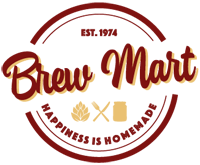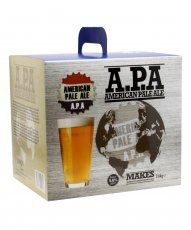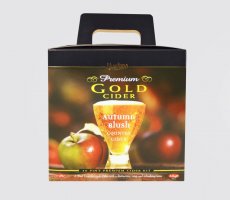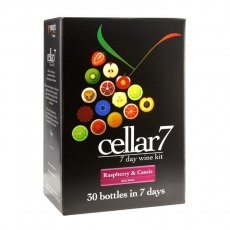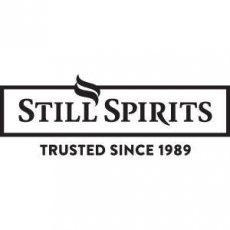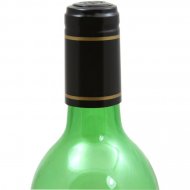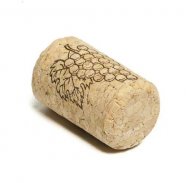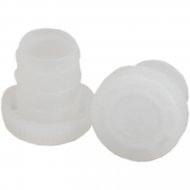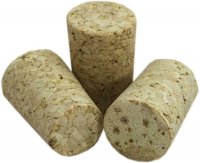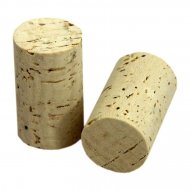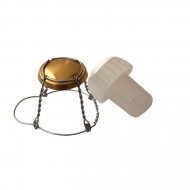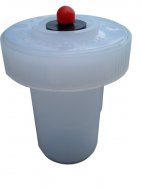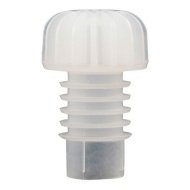Sign up to the Brew Mart newsletter for the latest news, offers & more
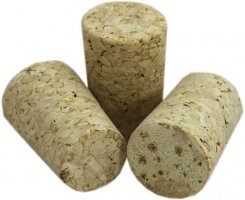
Wine Corks - Wine Stoppers
Cork is a natural substance obtained from the outermost layer of bark from the cork oak tree.
Its history of use dates back thousands of years, and as with so many natural products, it is still proving to have a wide range of applications in the modern world. The productive life of the cork tree averages about 150 years, with the first harvest at 20 years and the after every nine years.
After the third harvest, the bark is of sufficient quality for producing wine corks.
How is Cork Harvested?
A specially designed hatchet is used when harvesting cork from the oak trees, and vertical and horizontal cuts are made through the bark. Care is taken not to hurt the living part of the tree. Usually, the harvesting takes place on the trunk, but the lower branches can be utilised on some more giant trees. The layer is then very gently removed by using the wedge-shaped side of the hatchet.
The slabs are then left to cure outside in the sun and rain for up to 6 months. Curing strengthens and flattens them. Each slab undergoes treatment using heat and water to remove dirt and unwanted chemicals. The washing leaves the cork more flexible and soft.
Once it is ready, removing the poorer quality cork takes place. The better quality portion is left to cure and dry in darkness and controlled humidity. This high-quality material will be made into wine stoppers, while the lower quality cork will be ground and made into the agglomerated cork.
Producers realise that older trees produce better quality cork. Allowing the trees to grow does provide excellent habitat for local wildlife, some of which, like the Iberian lynx, may be in danger of extinction.
Until the mid -the 1700s, any cork harvesting was done where it grew naturally, but its increasing use led to its being purposefully cultivated.
Portugal is the largest producer of corks, providing 52.5 per cent.
The primary production of Portugal's cork is in the region of Alentejo
Spain, Italy, and Algeria are the following primary producers of cork
Sixty-eight per cent of all cork production is to make wine bottle stoppers.
Products
Corks can be made in several ways:
1. Natural cork stoppers are made from a single piece of bark. They have the best flexibility, keeping the seal strong for ageing wine for over five years.
2. Colmated corks are made from a single piece of bark but have pores filled with cork dust and glue. The corks are easier to remove from a bottle and are suitable for medium ageing.
3. Multi-piece corks have several pieces glued together. These are denser than single-piece corks and are not suitable for prolonged ageing.
4. Agglomerated corks are made of cork dust and glue and are dense, inexpensive, and not suitable for sealing wine for over a year.
5. Technical corks are agglomerated corks with single pieces of cork on either end.
Attributes
Cork stoppers are slow to deteriorate, moisture-resistant, help the wine age, and provide a waterproof seal. The corks are associated with a perception of high-quality wine, especially as cheaper alternatives are familiar with lower-cost wine.
Due to the structure of cork, it is easily compressed when inserted into a bottle and will then expand, forming a tight seal. The interior diameter of the neck of a glass bottle can be inconsistent. The ability to seal through variable contraction and expansion is an important attribute.
What Makes Cork so Useful?
- Cork's honeycomb-like structure is full of empty cells, making it lightweight.
- The low density allows it floats on water.
- Excellent for cushioning and shock and sound absorption.
- It is fire-resistant, flexible and not affected by rot or insects.
- Cork moulds into virtually any shape.
- When harvesting cork, the harvesters use environmentally sustainable methods.
With all these features, it truly is a fantastic material.
Cork Through the Ages:
- Cork and stoppers for bottles go back thousands of years.
- Tombs dating back to ancient Egypt have contained cork.
- Romans and Ancient Greeks also made good use of it. Their uses were floats for fishing nets, wine bottle stoppers, sandals,
- Fishermen made personal flotation devices.
- Villagers used it when building their homes. Its insulative properties kept their homes warm during winter and cooled during the summer months.
- It was resistant to attack from insects and other pests.
- It made the floors soft and comfortable to walk on.
As the years went by, cork continued to find its primary use as a bottle stopper, and during a time when beer or wine was safer to drink than most water, this was essential.
Starting in 1688, Pierre Perignon found corks held in place with wire to seal bottles of his latest creation, champagne.
The American William Painter 1892 designed the mass-produced cork-lined crown cap lid ( better known as a bottle cap), which made him very wealthy.
In 1890 a German company developed a method for utilising waste cork.
The company combined it with a binding agent to be rolled into sheets and then cut into whatever shape was needed.
These corks are called compound or agglomerated corks.
Using pressure and heat to release the naturally occurring resins, John Smith discovered that he could create a conglomerate of cork particles that did not require any binder.
Charles McManus then found a method of producing agglomerated cork to line bottle caps.
Others have found new and innovative ways of reusing waste cork and the byproducts of its production.
How to make wine stoppers from cork?
1. The cork is placed in a steam chamber to soften it.
2. The slabs are cut into strips as wide as the intended bottle stoppers.
3. The corks are then punched from the slab using hollow tubes.
4. The cork is pared down using a machine with a blade that rotates very fast to produce a tapered shape.
5. The next stage is washing, bleached and sterilising.
6. The corks are then dried and stamped with an identifying label.
7. The corks may be treated with paraffin or silicone and packed into airtight bags.
8. Corks are manufactured for still, and sparkling wines; the latter is bottled under pressure. The pressure forces the corks to take on a mushroom shape. They are then held in place with a wire cage known as a muselet.
How is Agglomerated Cork produced?
Cork is broken into small pieces and ground to the desired consistency. It is screened and packed into a mould. Pressure and high-temperature steam cause the release of natural biding agents, which hold it together once the mould is taken away.
Compound agglomerated cork uses a very similar process. However, an additional binding agent is used, heated more slowly in the mould.
After removing the mould, the blocks are allowed to dry and cure before being cut to shape for their intended use.
What Happens to the Leftovers?
The manufacture of cork is relatively environmentally friendly, and the harvesters repurpose any waste products.
No cork is wasted as any waste is ground up to make agglomerated cork, and cork powder may be used as fuel in the factory.
Chemical byproducts such as tannins, hard wax, resins and phonic acid are used in the paint, tanning, and toiletries/cosmetics industries.
In the modern world of synthetic materials, cork continues to lead the way. This fantastic and natural material has a wide range of uses beyond the often thought of stopper for wine bottles.
New ways to use it are continually being thought of, and it will continue to be an environmentally friendly favourite of manufacturers and designers for many years to come.
